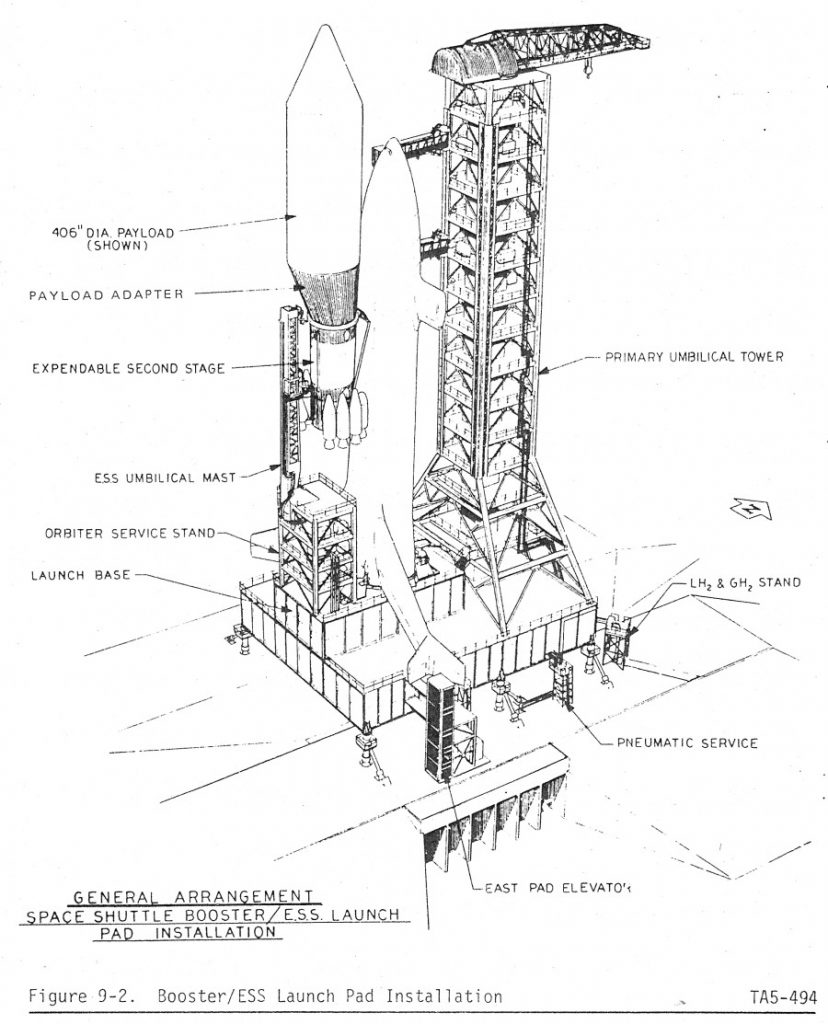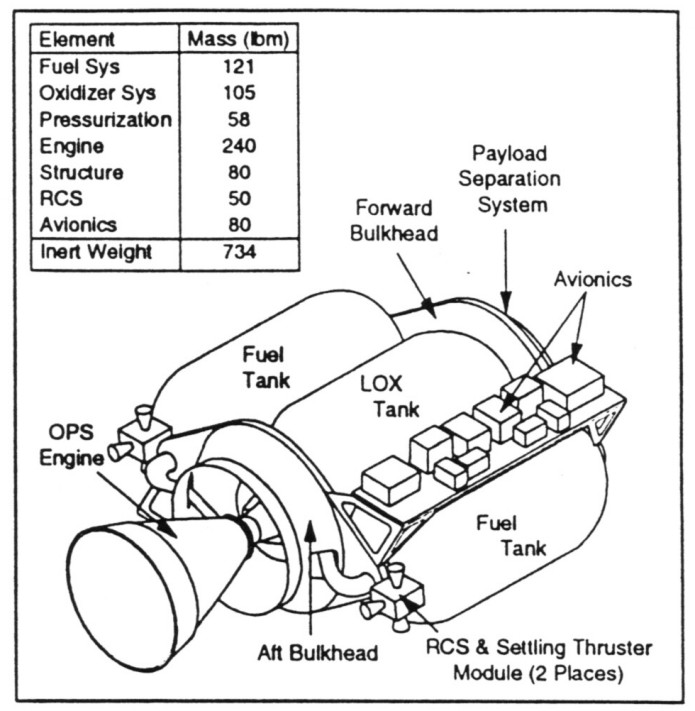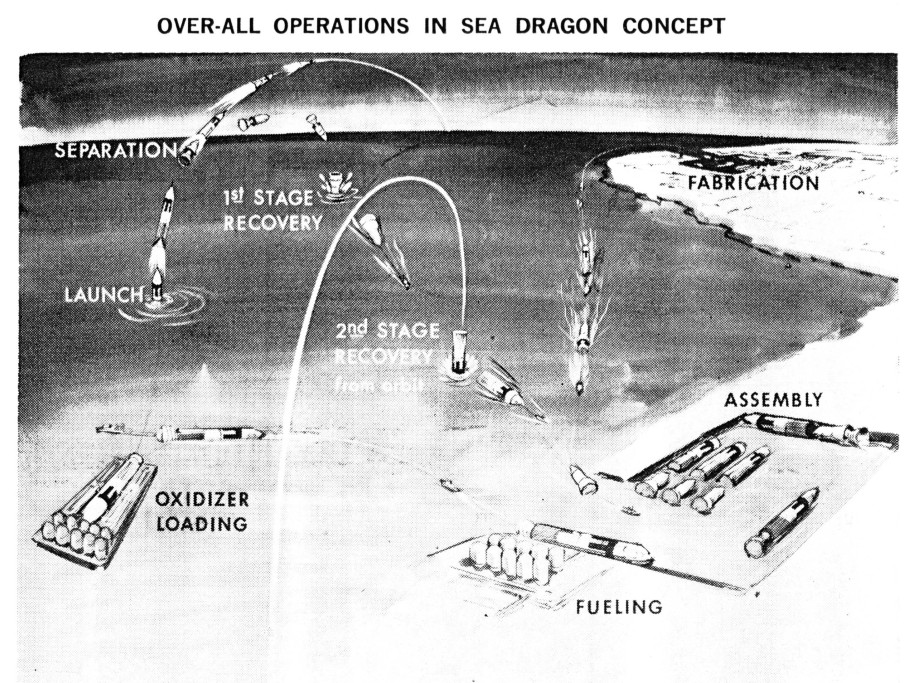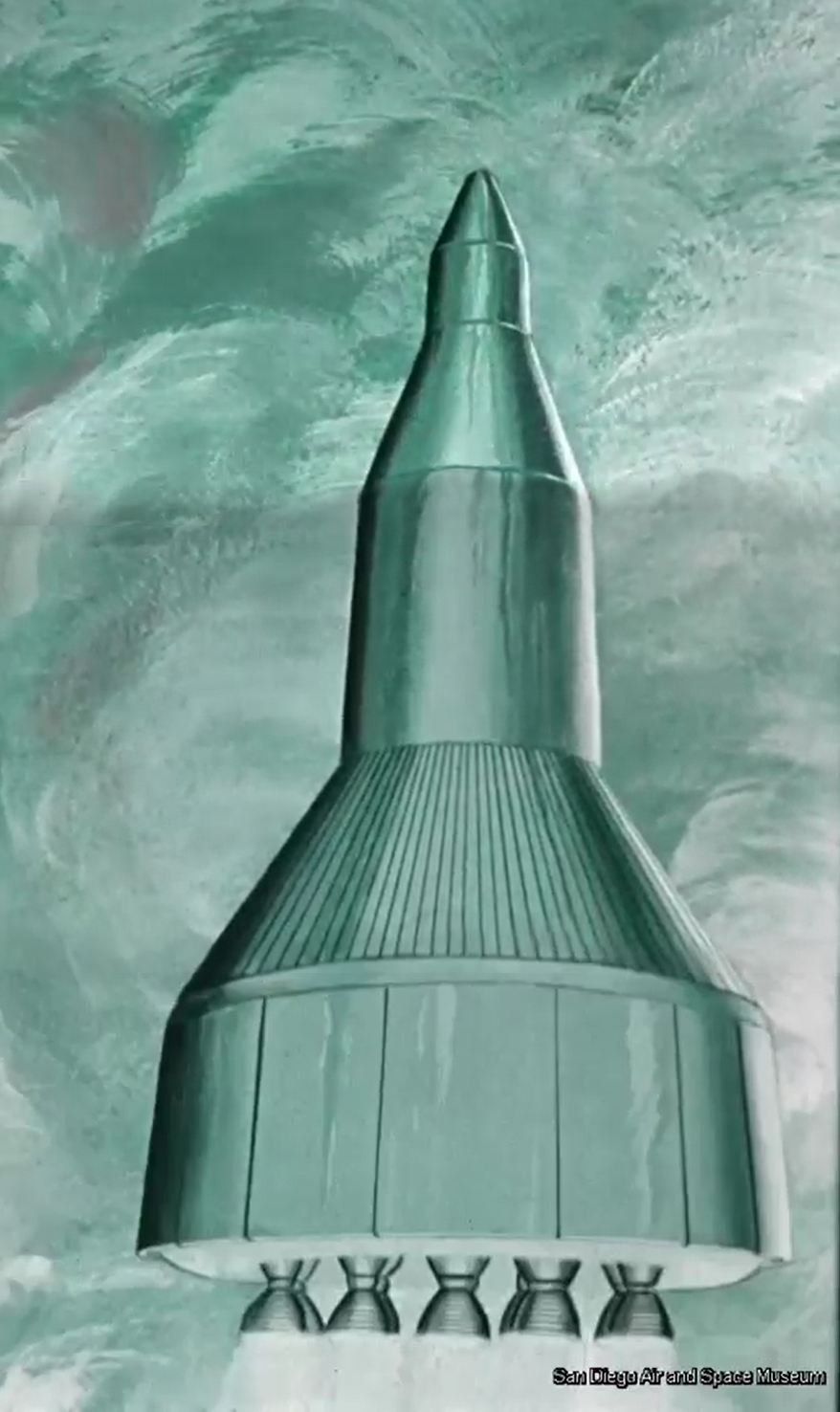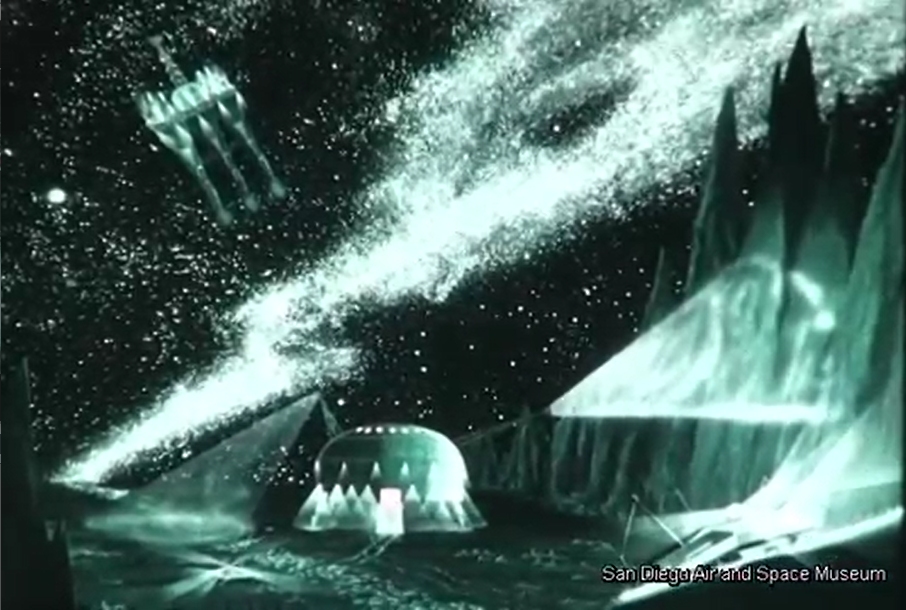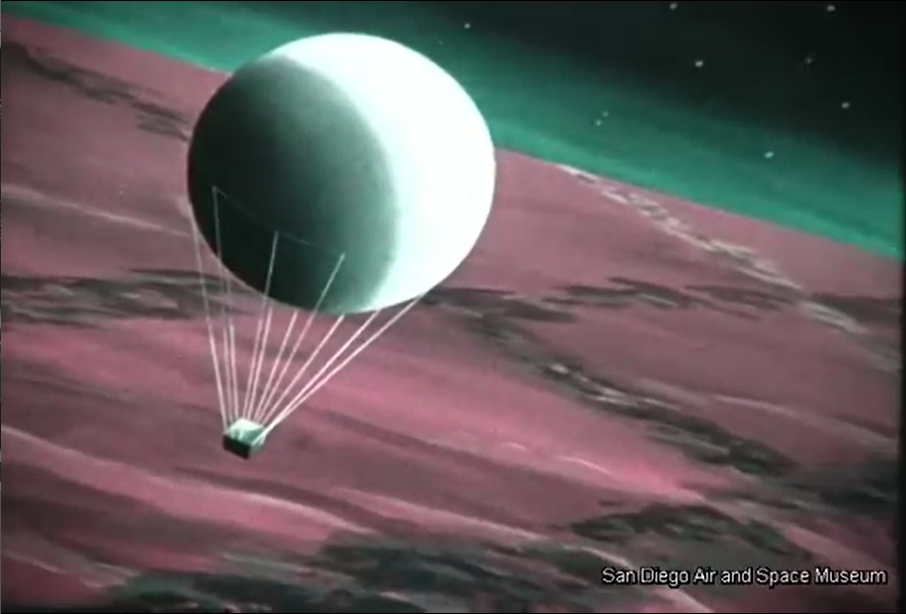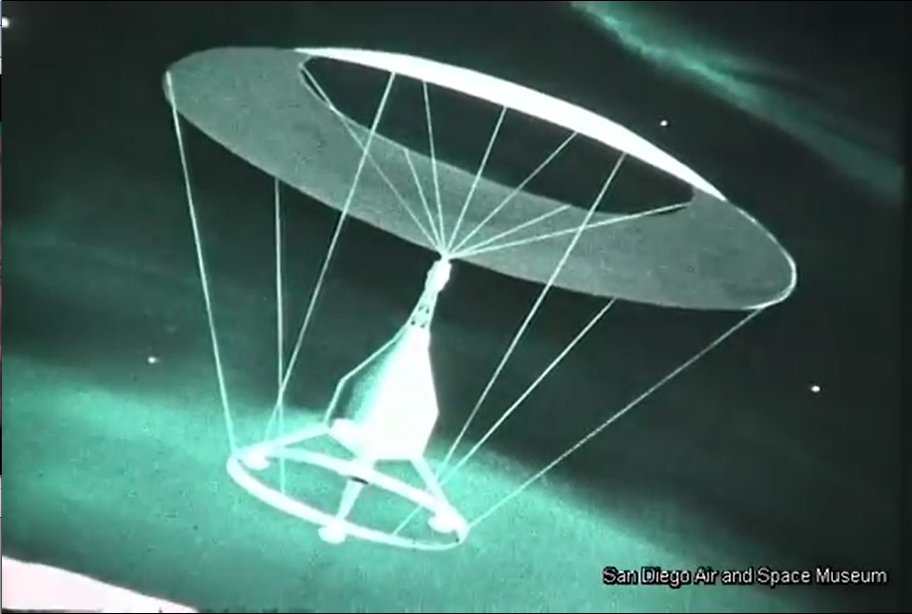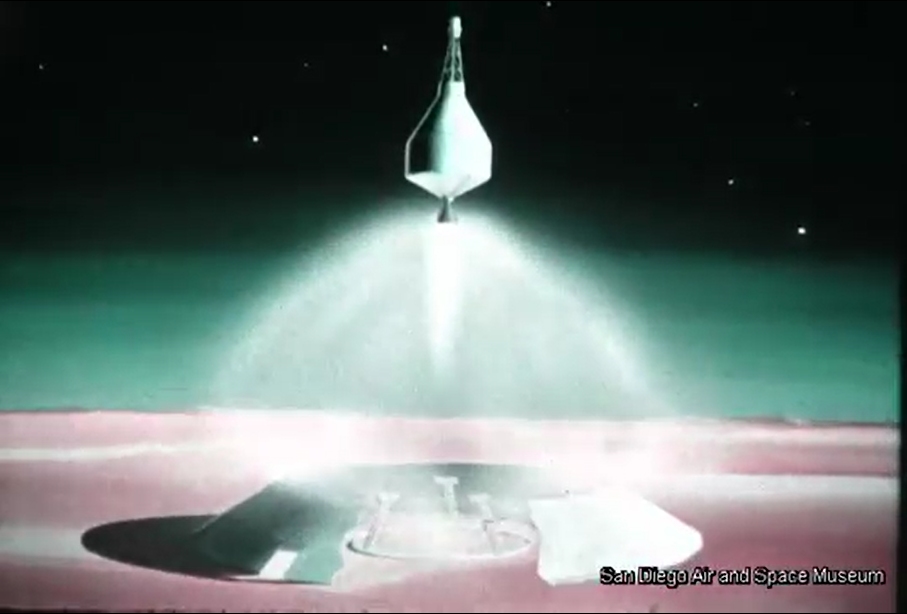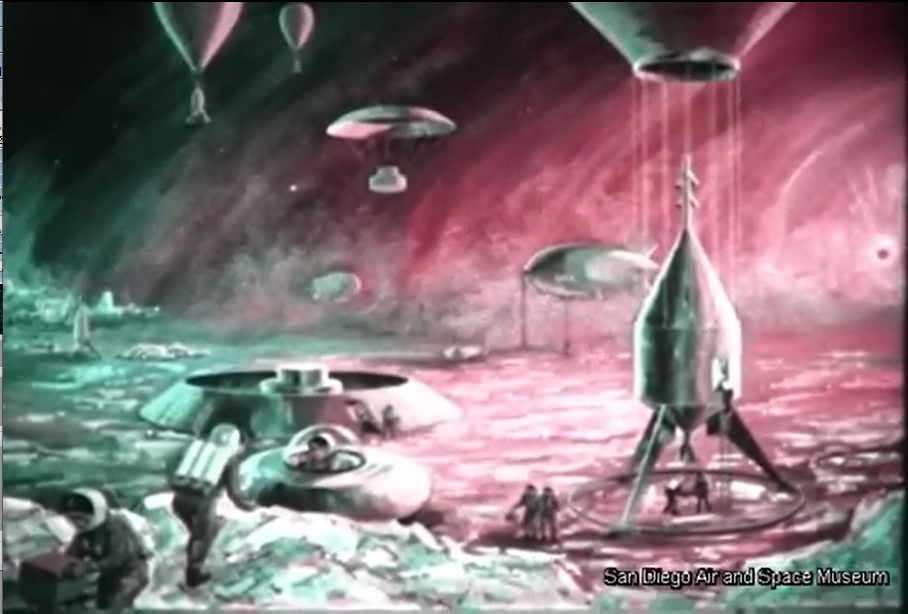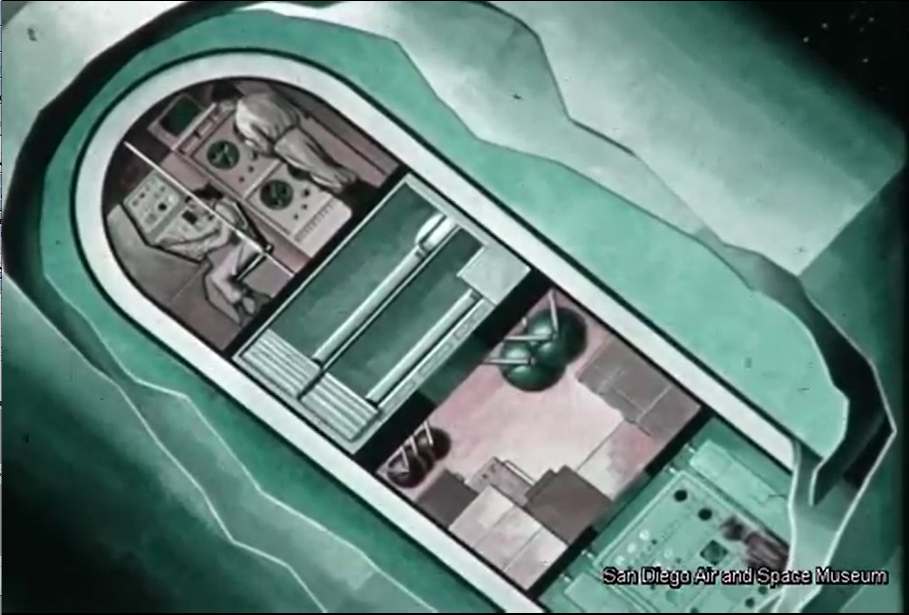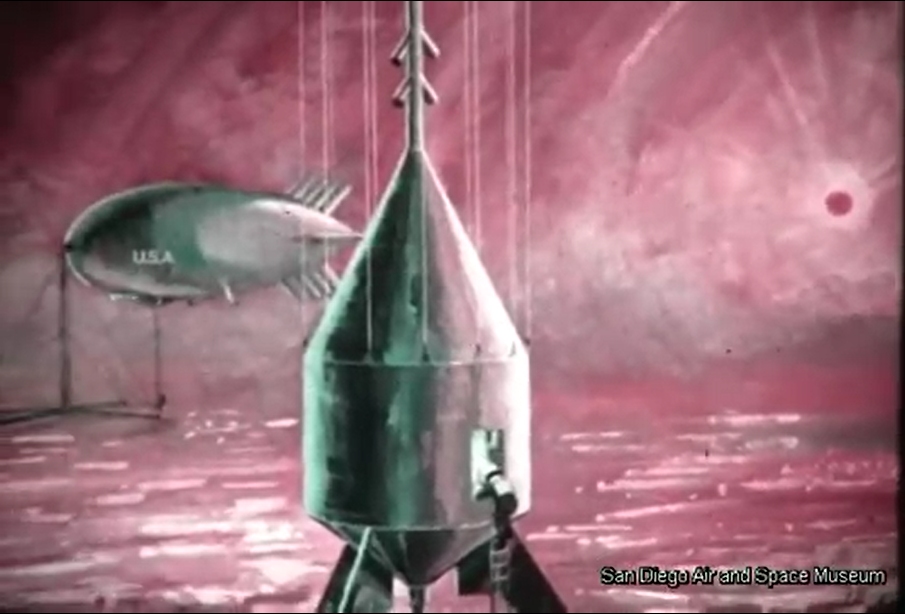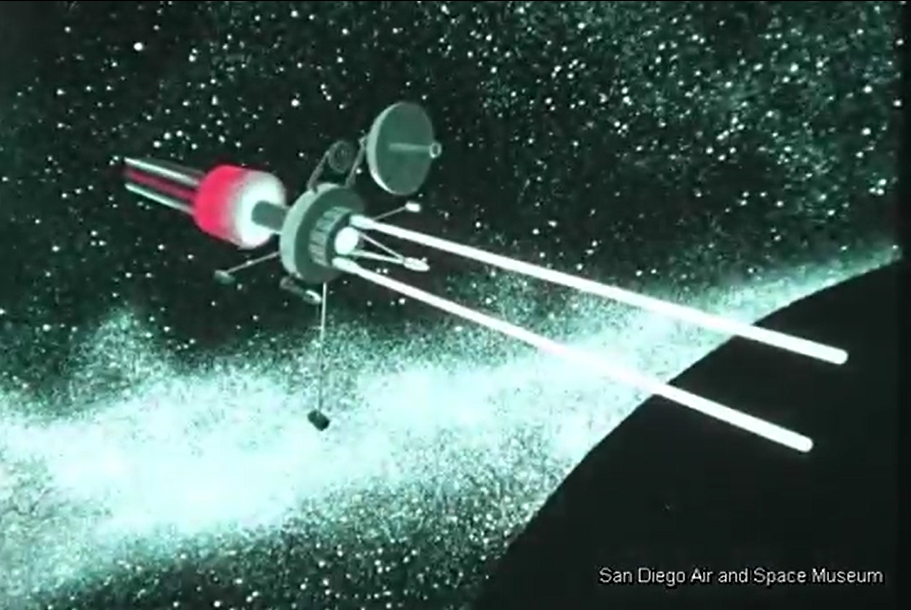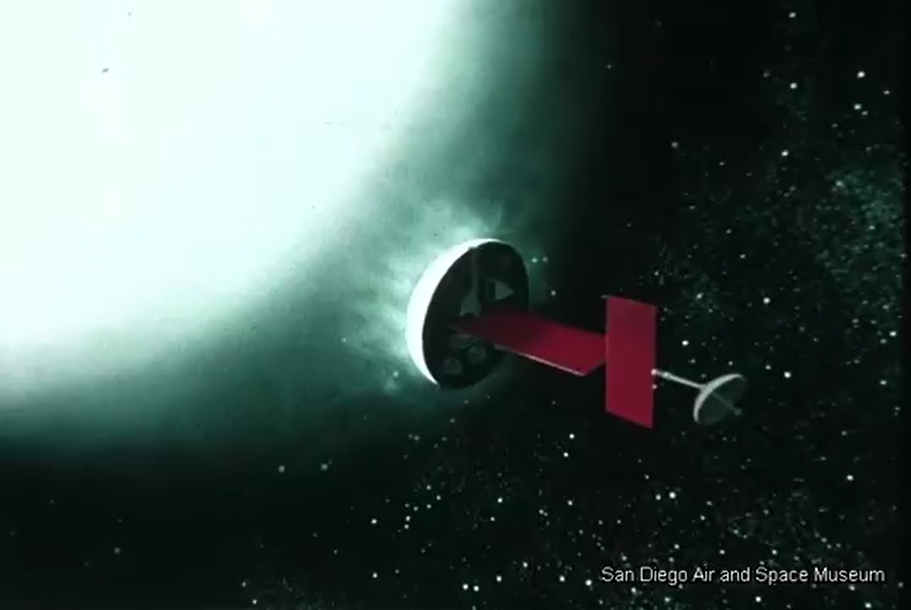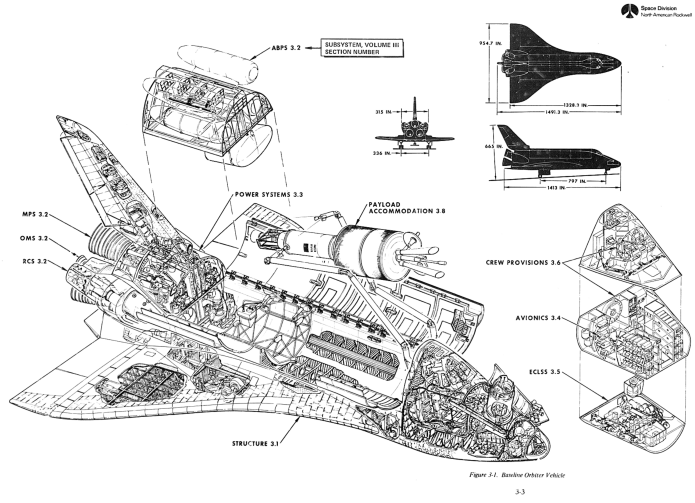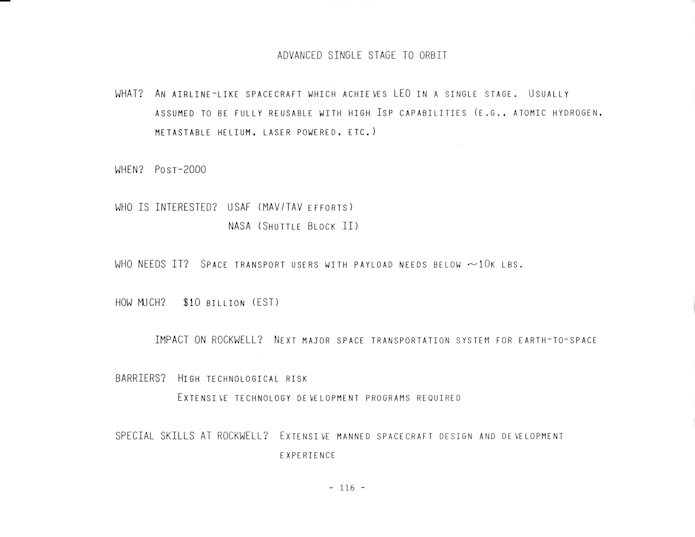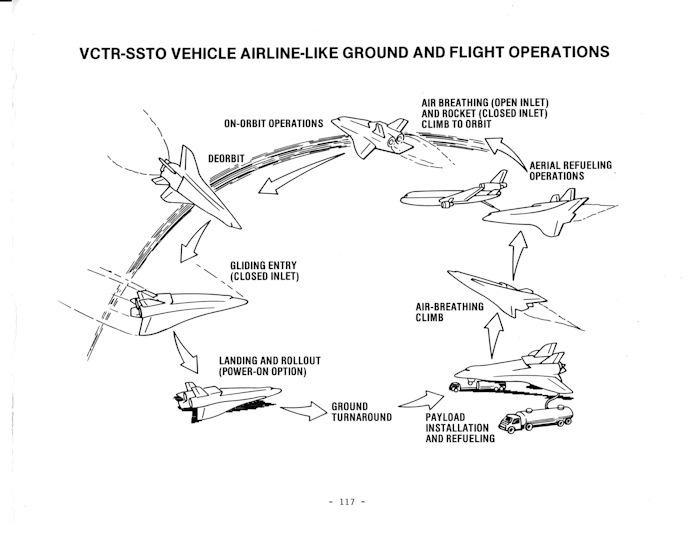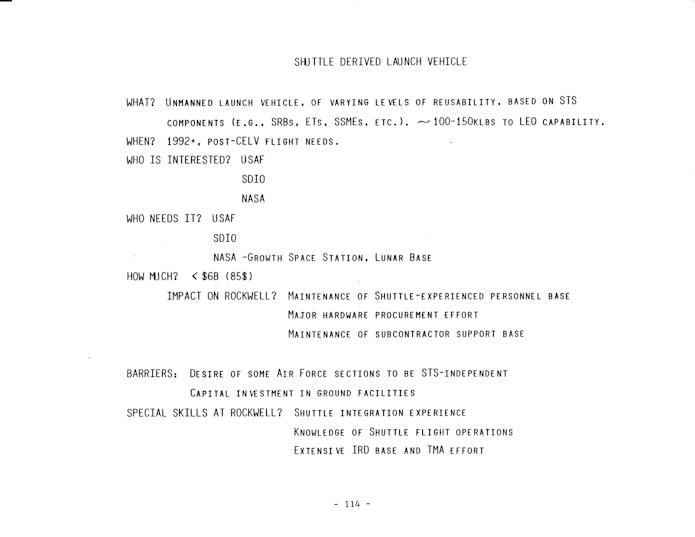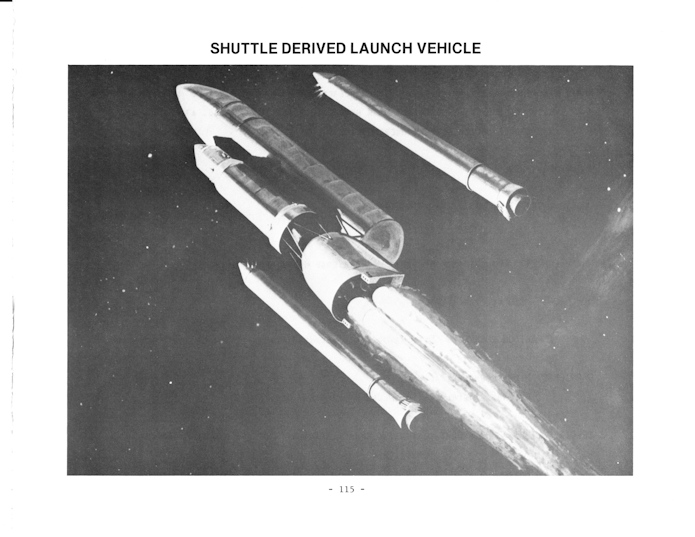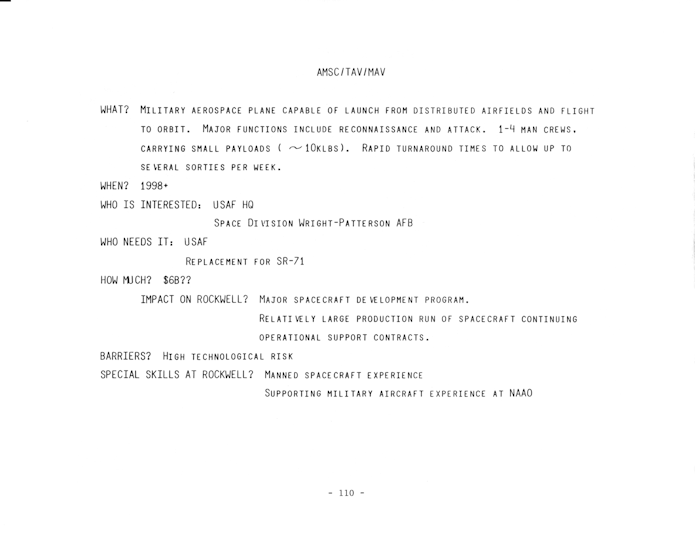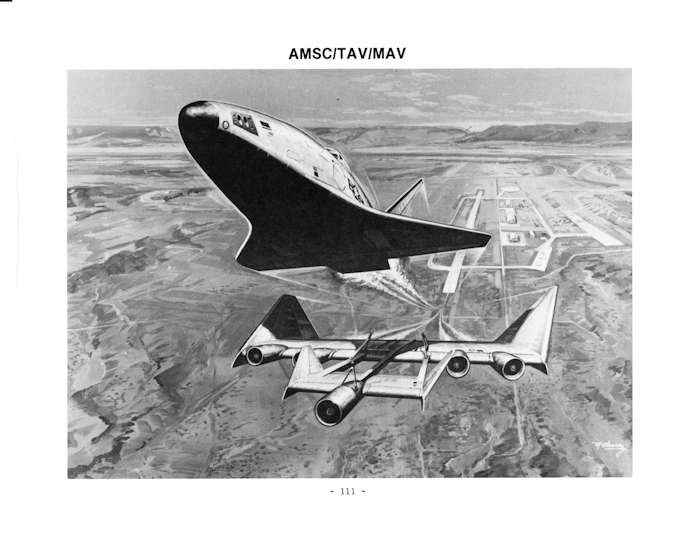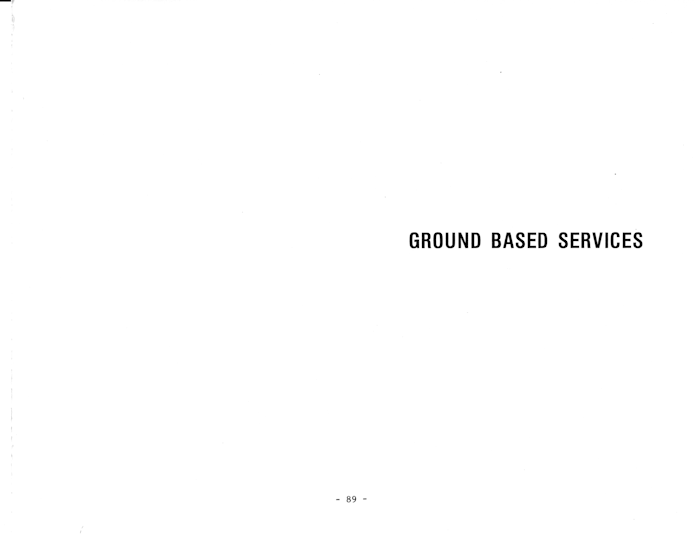A beautiful illustration of a circa 1972 concept for a McD Expendable Second Stage for the then-planned manned flyback booster for the Space Shuttle. The Saturn S-IVB-derived stage would be equipped with an array of solid rocket boosters for maximum thrust and maximum complicatedness.
Given the craziness going on, I decided that what the world clearly needs is something consistent. Like, say, me posting one piece of aerospace diagram or art every day for a month or so. So I’m going to do that. But in order to keep people from getting too complacent, I’m posting some of them on this blog, some on the other blog. Why? Because why not, that’s why. I’m slapping the posts together now and scheduling them to show up one at a time, one a day. Given the pandemic… who knows, this little project might well outlive *me.*
So, check back in (on this blog or the other) on a daily basis. Might be something interesting.
Sea Dragon was, as is doubtless news to few around here, an early 1960’s idea at Aerojet for an extremely large, very simply two-stage pressure-fed space booster. It was meant to be as cheap to build and operate as possible with 1960’s tech, relying on scale to make it all work. Would it have worked? Maybe. Physics supports it. Would it have been cheap to operate? Hard to tell. “Simple as possible” does not equate to “simple,” and anything the size of Sea Dragon, especially screaming out of the sky to smack into the ocean while blisteringly hot… well, there are always risks.
In 1963 the idea of a pinpoint vertical landing a la the Falcon 9 would have been ridiculous, so splashdown was really the only way to go for a booster designed for simplicity. But as NASA and Thiokol found with dropping Shuttle boosters into the drink, recovery and refurbishment after salt water immersion can be a bit of a headache. The way to make a Sea Dragon truly economically competitive would be, as with Falcon 9, flight after flight after flight, often enough that it ceases to be an Amazing News Story and becomes, like the Falcon 9, seemingly dull and monotonous. But given the million-pound payload of the Sea Dragon it’s difficult to envision a space program following on the footsteps of Apollo that would have required a Sea Dragon every few weeks. It would certainly have been *nice* to have had such a program (and if the current pandemic takes down western civ it will turn out that the lack of such a program was criminally negligent) but the existence of a timeline with such a program seems a little difficult to envision.
The article, written by sea Dragon advocate Robert Truax, that the above illustration came from has been scanned and made available to above-$10 APR subscribers and Patrons.
This video was posted on YouTube some six-ish years ago, but remains worthy of viewing and discussion. It’s a General Dynamics film to NASA from late 1962/early 1963 discussing the study of Early Manned Interplanetary Missions (EMPIRE), NAS8-5026. It describes the future as it should have been… and as how Krafft Ehricke, the presenter of the film and one of the driving forces behind the program, saw it:
1: Manned landing on the moon by the end of the 60’s.
2: Initial manned flights to (flybys and orbits) Venus and Mars in the early 70s
3: Entire solar system explored robotically by the end of the 1980’s
4: Manned mission to Pluto by 1995
Ehricke’s view of the future of space flight from the standpoint of the mid-1960’s was previously shown HERE.
The original film included a number of bits of concept art of both manned and unmanned spacecraft. Sadly no Orion vehicles are on display (it is name-dropped), but the Mars lander/excursion module was of the kind originally proposed for Orion. This was pre-Mariner when the Martian atmosphere was *massively* over-estimated; these landers and their dinky parachutes would, with the real Martian atmosphere, have made impressive craters in the surface.
The North American Rockwell proposal for the Space Shuttle Orbiter. It is clearly *close* to what actually got built, but there are important differences. The airlock is in the nose and the OMS pods are lower on the sides of the rear fuselage and the rear portion of the cargo bay could be fitted with a pod that includes flip-out turbofan engines for range extension and landing assistance.
The full-rez scan of this diagram has been made available to all $4 and up APR Patreons and Monthly Historical Document Program subscribers. It has been uploaded to the 2020-02 APR Extras folder on Dropbox for Patreons and subscribers. If interested in this piece or if you are interested in helping to fund the preservation of this sort of thing, please consider becoming a patron, either through the APR Patreon or the Monthly Historical Document Program.
In 1985, Rockwell International considered the business case of an advanced single stage to orbit vehicle. The design illustrated was a manned, winged horizontal launched, horizontal landing design with, oddly, air inlets on the upper surface. Unlike the “Orient Express” or NASP designs of the time, this design was not meant to lift off and accelerate to Ludicrous Speed using scramjets, but was to lift off and rather sedately rendezvous with a tanker aircraft. This… is a bit familiar.
In the late 1990’s I worked for Pioneer Rocketplane. Our plan was to design and build a spaceplane that would lift off from a runway under turbojet power, with fuel tanks full of RP-1 and oxidizer tanks full of very little. The vehicle would rendezvous with a tanker aircraft which would transfer not jet fuel, but liquid oxygen. This is because for best performance an RP-1/LOX rocket system needs a far greater mass of LOX than RP-1. So leaving the LOX tank basically empty (a small amount was carried to keep the tank pressurized and chilled) would allow the vehicle to lift off at lowest practical mass. This lowered the mass needed for the landing gear, and lowered the surface area needed for the wings, which of course lowered the mass of the wings. The rocketplane would tank up, separate from the tanker and fire its rocket engine. In the case of the Pioneer Rocketplane “Pathfinder,” the spaceplane would reach orbital altitude, but not orbital velocity. An upper stage would boot the payload into orbit; the spaceplane would return home, either gliding or under jet power. The Rockwell design illustrated below *seems* to have been meant to operate in a similar fashion, but with the spaceplane intended to put itself directly into orbit. Most likely it would have been LH2/LOX powered, probably with SSME derivative engines.
The description in the text, though, describes very different vehicles, using propulsion system best described as highly steeped in the hypothetical. Atomic hydrogen and metastable helium are great stuff if you can get them… and, basically, you can’t. Not with 1980’s tech, not with 2020 tech. Someday, maybe.
In 1985, Rockwell International contemplated the business case for Shuttle Derived Launch Vehicles. The specific design illustrated used the ET and SRB’s more or less stock, but the orbiter was replaced with a recoverable propulsion and avionics module. The payload came in the form of an upper stage with something very like the Apollo Command and Service Modules. This would probably have been for a lunar mission of some kind as a Shuttle-class booster is too big for a simple capsule mission to LEO. The basic design would have roughly performed like the presumably forthcoming SLS.
In the 1980’s, military spaceplanes were all the rage… at least on paper. In 1985 Rockwell International considered the possibility that there would be a profitable business case for a relatively small manned spaceplane that could serve as a rapid-reaction launch system for missions such as recon. Thirty years later the X-37 finally accomplished something sorta along those lines, though without the crew and rapid reaction.
Continuing the report into a less interesting section, that of ground based services that in 1985 Rockwell thought might be profitable. these ideas included STS Marketing Services, Consolidated Space Operations Center, DOD “Schedule C,” Payload Certification from NASA, Commercial Payload Software Services, Commercial ASE Services, and Turn Key Launch Services.
Up next: More Interesting Stuff.
More after the break…
